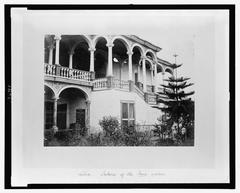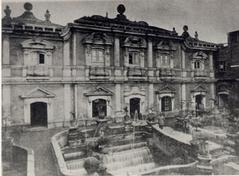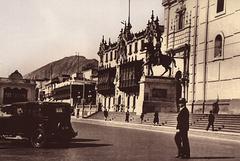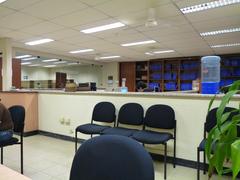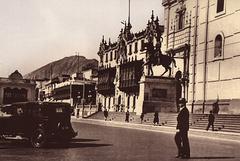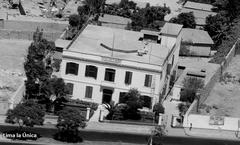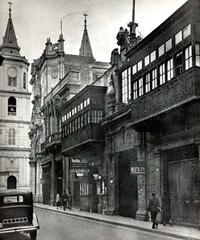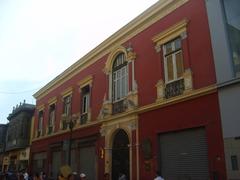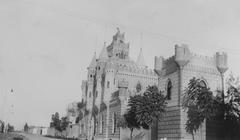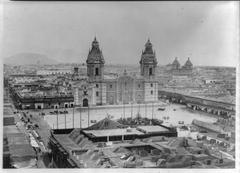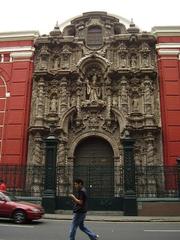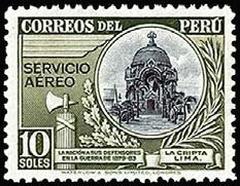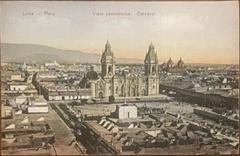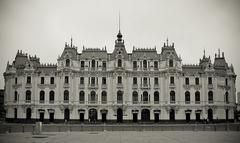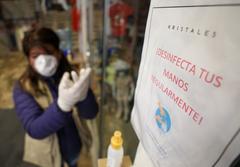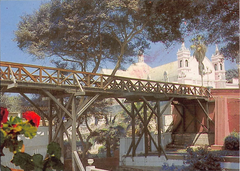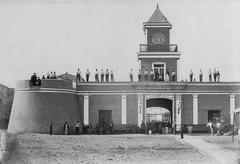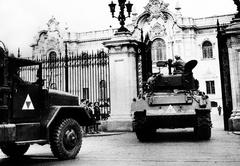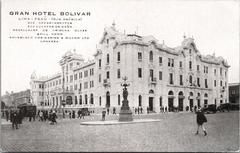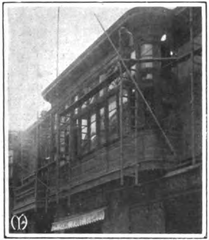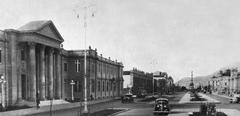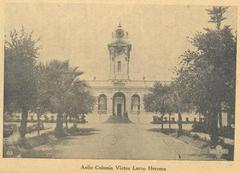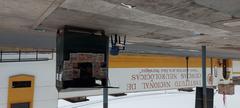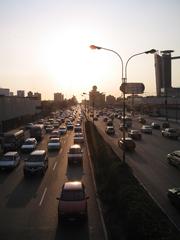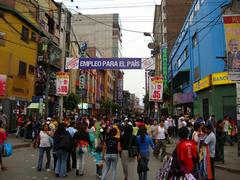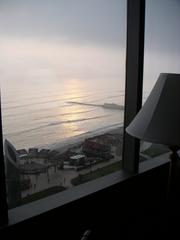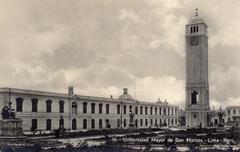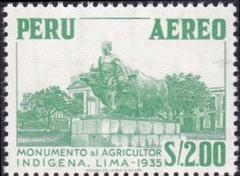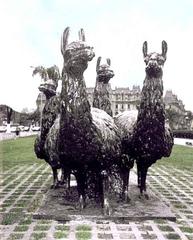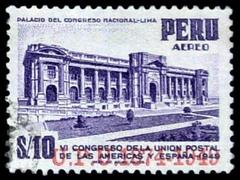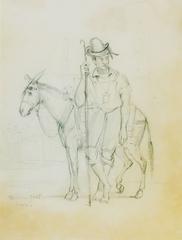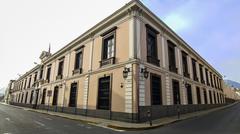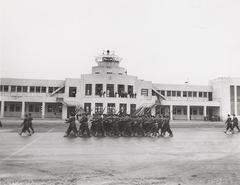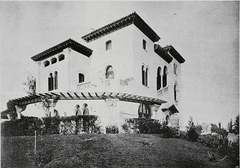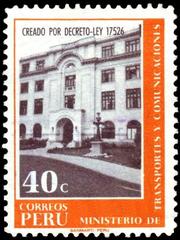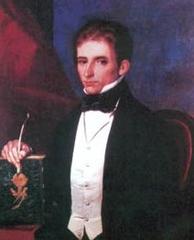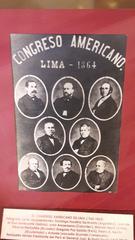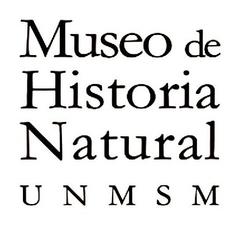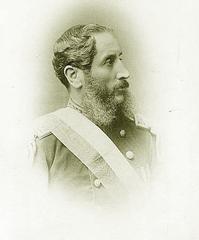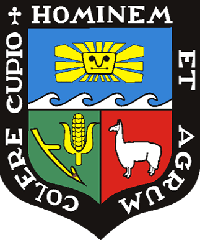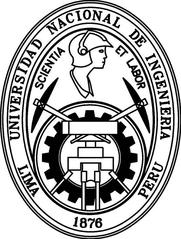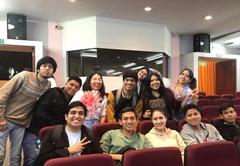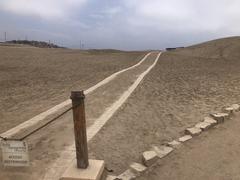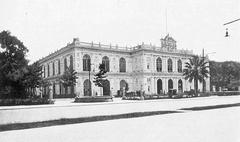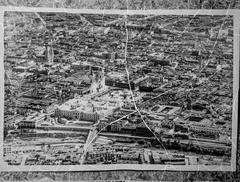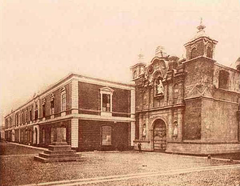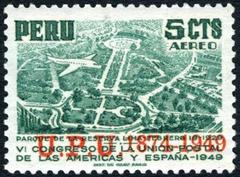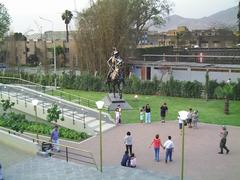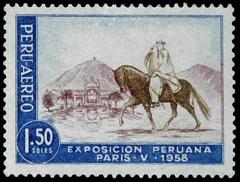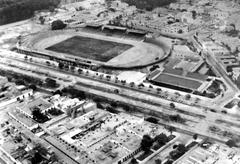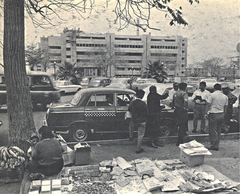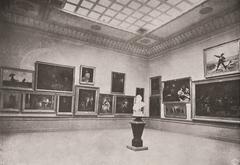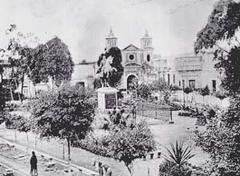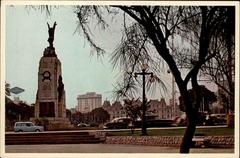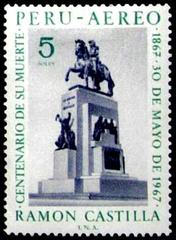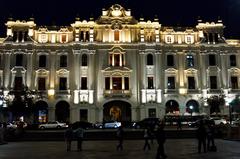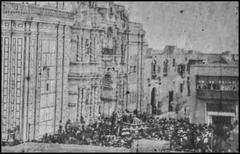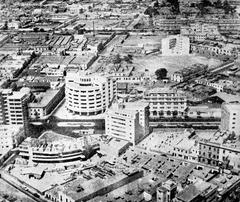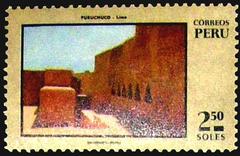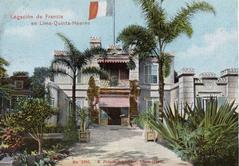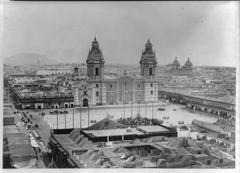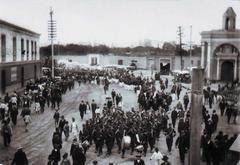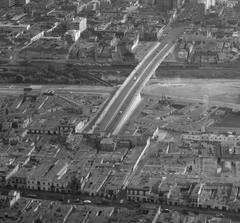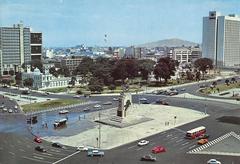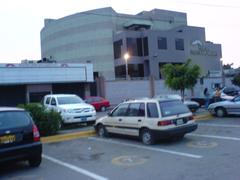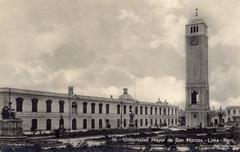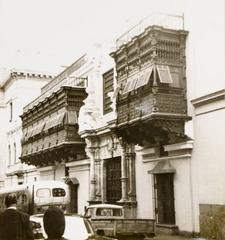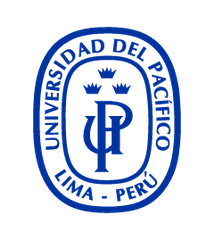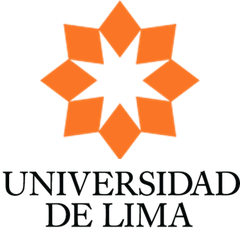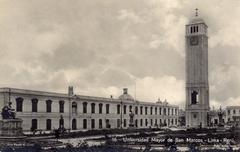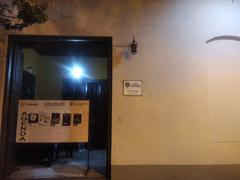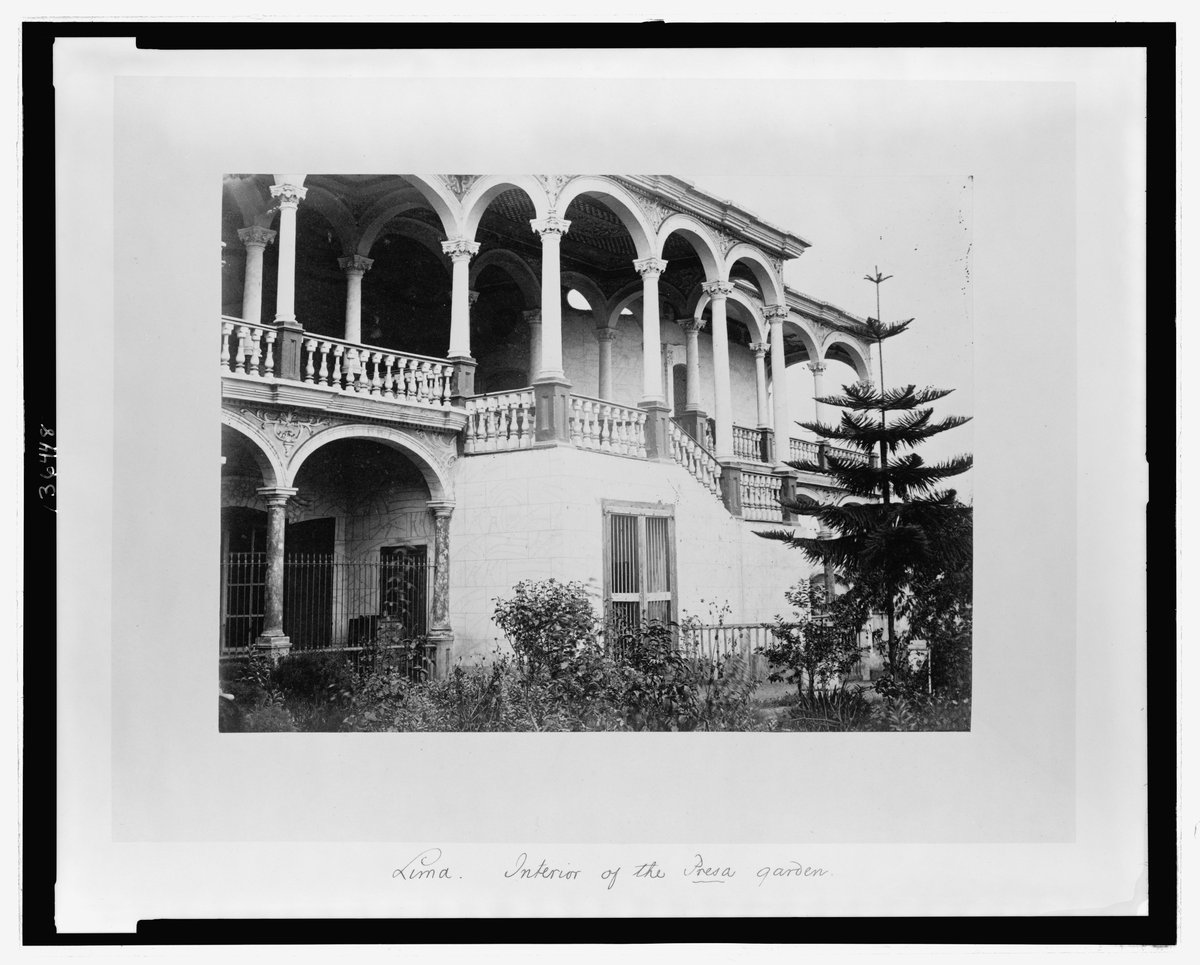
Visiting Quinta de Presa in Lima: Hours, Tickets, and Tips
Publication Date: 31/07/2024
Overview of Quinta de Presa
Quinta de Presa, an exquisite eighteenth-century suburban villa, is located on the outskirts of downtown Lima, north of the Rímac River. This architectural marvel, blending French Baroque and Rococo styles, provides an intriguing glimpse into the luxurious lifestyle of Lima’s aristocracy during the Age of Enlightenment. As one of Lima’s historical gems, Quinta de Presa stands as a testament to the city’s rich cultural heritage and architectural grandeur. This comprehensive guide aims to offer an in-depth look at the villa’s history, significance, and practical visitor information. Whether you are a history enthusiast, an architecture aficionado, or a curious traveler, understanding the origins, architectural features, and historical context of Quinta de Presa will enrich your visit. Additionally, this guide covers essential visitor tips, restoration efforts, and the cultural impact of this landmark, ensuring you make the most of your trip to one of Lima’s most significant historical sites (World Monuments Fund, Wikipedia, Lonely Planet).
Content Overview
- Introduction
- History and Significance
- Origins and Construction
- Architectural Style and Features
- Historical Significance
- Ownership and Decline
- Restoration Efforts
- Cultural and Community Impact
- Visitor Information
- Ticket Prices and Visiting Hours
- Travel Tips
- Nearby Attractions
- Accessibility
- Future Prospects
- FAQ
- Conclusion
Visiting Quinta de Presa: History, Significance, and Visitor Information
Introduction
Quinta de Presa is an eighteenth-century suburban villa located on the outskirts of downtown Lima, north of the Rímac River. Known for its unique blend of French Baroque and Rococo architectural styles, the villa offers a glimpse into the lifestyle of Lima’s aristocracy during the Age of Enlightenment. This article provides comprehensive information on its history, significance, and visitor details to help you plan your visit.
History and Significance
Origins and Construction
Quinta de Presa was constructed in the late Rococo style by Pedro Carrillo de Albornoz, a member of Lima’s aristocracy and the younger son of the 4th Count of Montemar. The villa was named after his aunt, Isabel Carrillo de Albornoz y de la Presa, who bequeathed the estate to him (World Monuments Fund).
Architectural Style and Features
The architectural style of Quinta de Presa is a blend of French Baroque and Rococo, adapted to the climate of Lima and the available construction materials. Covering a constructed area of 15,159 square meters (163,170 sq ft), the villa includes a residence, a mill, outbuildings, a courtyard, and extensive gardens (Wikipedia). The Rococo style is evident in the intricate decorative elements and the overall elegance of the structure.
Historical Significance
Quinta de Presa holds significant historical value as it reflects the lifestyle and cultural pursuits of Lima’s aristocracy in the eighteenth century. The villa was used for leisure activities and for cultural and scientific endeavors, serving as a venue for intellectual and cultural activities during the Age of Enlightenment (World Monuments Fund).
Ownership and Decline
The villa was the ancestral home of the Carrillo de Albornoz family and the Bravo de Lagunas family. Over the years, the property changed hands several times and eventually fell into disrepair. The Peruvian State purchased the complex in 1920, and a museum was installed on the second floor in 1935, although it was short-lived. The site was declared a National Historic Monument in 1972 (World Monuments Fund).
Restoration Efforts
Despite its historical significance, Quinta de Presa faced neglect and deterioration over the decades. The World Monuments Fund (WMF) included the villa on the 2012 World Monuments Watch to highlight its dilapidated state and potential for rehabilitation. In 2015, an agreement to rehabilitate Quinta de Presa was signed by various organizations, and a significant investment was announced in 2021 for its recovery (World Monuments Fund).
Cultural and Community Impact
The restoration of Quinta de Presa aims to revitalize the Rímac district by promoting tourism, cultural events, and economic opportunities. Combined with other heritage sites like the Alameda de los Descalzos and Paseo de Aguas, Quinta de Presa can serve as a catalyst for positive change in the community (World Monuments Fund).
Visitor Information
Ticket Prices and Visiting Hours
- Ticket Prices: Information on ticket prices can be found on the official website or at the entrance.
- Visiting Hours: The villa is open to visitors from 9 AM to 5 PM, Tuesday to Sunday.
Travel Tips
- Best Time to Visit: The best time to visit Quinta de Presa is during the dry season, from May to September.
- Guided Tours: Guided tours are available and highly recommended to fully appreciate the villa’s history and architecture.
Nearby Attractions
- Alameda de los Descalzos: A historic promenade located nearby.
- Paseo de Aguas: Another significant heritage site in the vicinity.
Accessibility
- Accessibility: The site is accessible to visitors with mobility issues, but it’s advisable to check specific accessibility features in advance.
Future Prospects
The ongoing restoration efforts aim to transform Quinta de Presa into a vibrant cultural hub. The proposed Peruvian Textiles and Costume Museum will preserve and showcase Peru’s rich textile heritage, attracting tourists and scholars. The restored villa will offer cultural activities, exhibitions, and educational programs, contributing to the cultural and economic development of the Rímac district (World Monuments Fund).
FAQ
- What are the visiting hours for Quinta de Presa?
- Visiting hours are from 9 AM to 5 PM, Tuesday to Sunday.
- How much are the tickets for Quinta de Presa?
- Ticket prices vary; please check the official website for the latest information.
Conclusion
Quinta de Presa stands as a testament to the rich cultural and architectural heritage of Lima’s aristocracy during the eighteenth century. Its restoration promises to revitalize the Rímac district and preserve an important piece of Peru’s history for future generations. The collaborative efforts and significant investment in its restoration underscore the villa’s historical and cultural significance, ensuring that it remains a valuable asset to the community and a symbol of Lima’s illustrious past.
Essential Visitor Tips for Quinta de Presa: Exploring Lima’s Historical Gem
Introduction
Quinta de Presa is an enchanting historical site nestled in the heart of Lima’s Rímac district. With its rich colonial architecture and lush gardens, it offers a unique glimpse into Peru’s past. To make the most of your visit, follow these essential tips and immerse yourself in the history and beauty of this remarkable landmark.
Planning Your Visit
Opening Hours and Admission Fees Quinta de Presa is typically open to the public from Tuesday to Sunday, 9:00 AM to 5:00 PM. It is advisable to check the official website or contact local tourist information centers for the most current information on opening hours and any special events that might affect access. Admission fees are generally modest, with discounts available for students, seniors, and children. Occasionally, there are free entry days, particularly during national holidays or cultural festivals.
Best Time to Visit The best time to visit Lima, and by extension Quinta de Presa, is during the dry season, which runs from May to September. During these months, the weather is mild and pleasant, making it ideal for exploring outdoor attractions. July, in particular, is a great month to visit due to the clear skies and vibrant cultural activities (Lonely Planet).
Getting There
Location and Accessibility Quinta de Presa is located in the Rímac district of Lima, a historic area known for its colonial architecture and cultural significance. The site is easily accessible by public transportation, including buses and taxis. For those driving, there is limited parking available nearby. It is recommended to use a reliable GPS service or map application to navigate the often busy streets of Lima.
Public Transportation Lima’s public transportation system is extensive and affordable. The Metropolitano bus service is a convenient option, with several routes passing close to Quinta de Presa. Alternatively, taxis and ride-sharing services like Uber are widely available and can provide a more direct route to the site. Always ensure that taxis are registered and agree on a fare before starting your journey.
What to Bring
Essential Items
- Comfortable Footwear: The grounds of Quinta de Presa are extensive, and comfortable walking shoes are a must.
- Sun Protection: Lima’s sun can be quite strong, especially during the dry season. Bring sunscreen, a hat, and sunglasses.
- Water and Snacks: While there are often vendors nearby, it’s a good idea to bring your own water and light snacks to stay hydrated and energized.
- Camera: The picturesque gardens and historic architecture provide excellent photo opportunities.
Weather Considerations Lima’s weather can be unpredictable, with sudden changes even during the dry season. It’s advisable to carry a light jacket or sweater, especially if you plan to stay until the evening when temperatures can drop.
On-Site Amenities
Guided Tours Guided tours are available and highly recommended to fully appreciate the historical and cultural significance of Quinta de Presa. These tours are often conducted in both Spanish and English and can be booked in advance through the official website or at the entrance. A guided tour typically lasts about 1-2 hours and provides in-depth insights into the history and architecture of the site.
Facilities The site is equipped with basic amenities, including restrooms and a small gift shop where visitors can purchase souvenirs and informational booklets. There are also benches and shaded areas throughout the gardens, providing a pleasant spot to rest and take in the surroundings.
Safety Tips
Personal Safety While Lima is generally safe for tourists, it’s important to remain vigilant, especially in crowded areas. Keep personal belongings secure and be aware of your surroundings. Avoid displaying valuable items such as expensive jewelry or large amounts of cash.
Health Precautions Ensure you are up-to-date with any necessary vaccinations before traveling to Peru. It’s also advisable to carry a small first aid kit with essentials like band-aids, antiseptic wipes, and any personal medications. Drinking bottled water is recommended to avoid any potential stomach issues.
Cultural Etiquette
Respecting the Site Quinta de Presa is a historic site, and visitors are expected to treat it with respect. Avoid touching or climbing on the structures, and follow any posted signs or instructions from guides. Photography is generally allowed, but be mindful of any areas where it may be restricted.
Interacting with Locals Peruvians are known for their hospitality and friendliness. Basic Spanish phrases can go a long way in enhancing your experience and interactions. A simple “gracias” (thank you) or “por favor” (please) is always appreciated.
Nearby Attractions
Rímac District While in the area, take the opportunity to explore the Rímac district further. Notable sites include the Alameda de los Descalzos, a historic promenade, and the Church of San Francisco, known for its catacombs and colonial architecture.
Lima’s Historic Center A short distance from Quinta de Presa is Lima’s historic center, a UNESCO World Heritage site. Here, you can visit the Plaza Mayor, the Government Palace, and the Cathedral of Lima. These sites offer a deeper dive into Peru’s colonial history and are well worth the visit.
Accessibility
Quinta de Presa strives to be accessible to all visitors. The main pathways are well-maintained, but some areas may be challenging for those with mobility issues. It’s advisable to contact the site in advance to inquire about specific accessibility accommodations.
FAQ
1. What are the visiting hours for Quinta de Presa? Quinta de Presa is open from Tuesday to Sunday, 9:00 AM to 5:00 PM. Check the official website for any changes or special events.
2. How much are the tickets? Admission fees are modest, with discounts for students, seniors, and children. Occasionally, there are free entry days.
3. What is the best time to visit? The best time to visit is during the dry season, from May to September, with July being particularly ideal.
4. Are guided tours available? Yes, guided tours in both Spanish and English are available and highly recommended.
5. What should I bring? Comfortable footwear, sun protection, water, snacks, and a camera are essential items to bring.
Additional Resources
For more detailed information and updates, visitors can refer to the official tourism website of the Peruvian Ministry of Tourism. This site provides comprehensive details on current events, restoration projects, and visitor guidelines for Quinta de Presa and other attractions in Lima.
By following these tips, visitors can ensure a safe, enjoyable, and enriching experience at Quinta de Presa, immersing themselves in the rich history and culture of Lima, Peru.
Final Thoughts on Visiting Quinta de Presa
Quinta de Presa is not just an architectural marvel but a cultural beacon that encapsulates the opulent lifestyle and intellectual pursuits of Lima’s eighteenth-century aristocracy. The ongoing restoration efforts underscore the villa’s historical and cultural significance, aiming to revitalize the Rímac district and transform it into a vibrant cultural hub. As you plan your visit, take advantage of the comprehensive visitor information provided, including ticket prices, visiting hours, and travel tips. Don’t miss out on the guided tours, which offer invaluable insights into the villa’s rich history and architectural elegance. The restoration of Quinta de Presa is a promising venture that not only preserves a vital piece of Peru’s history but also fosters cultural and economic growth in the community. By visiting Quinta de Presa, you contribute to the preservation of this historical gem and immerse yourself in the rich tapestry of Lima’s past, ensuring that its legacy endures for future generations (World Monuments Fund, Wikipedia, Lonely Planet).
Sources and Further Reading
- World Monuments Fund, n.d., World Monuments Fund
- Wikipedia, n.d., Wikipedia
- Lonely Planet, n.d., Lonely Planet
- Peruvian Ministry of Tourism, n.d., official tourism website
